If you have ever heard that daddy longlegs are the most poisonous spiders on earth, you might want to check the facts. Many news sources, blogs, and TV shows have advertised that daddy longlegs’ bites are toxic, but these arachnids are harmless and can help you get rid of other pests.
Are daddy longlegs dangerous? Daddy longlegs are not dangerous because they do not have venom or fangs and their mouths are so small that they cannot break human skin. However, the cellar spider, often called a daddy longlegs, can bite humans, but it is not very toxic.
This article will talk about daddy longlegs and why they are not harmful to humans. It will help you separate fact from fiction and answer some questions you might have along the way.
Daddy Longlegs Identification
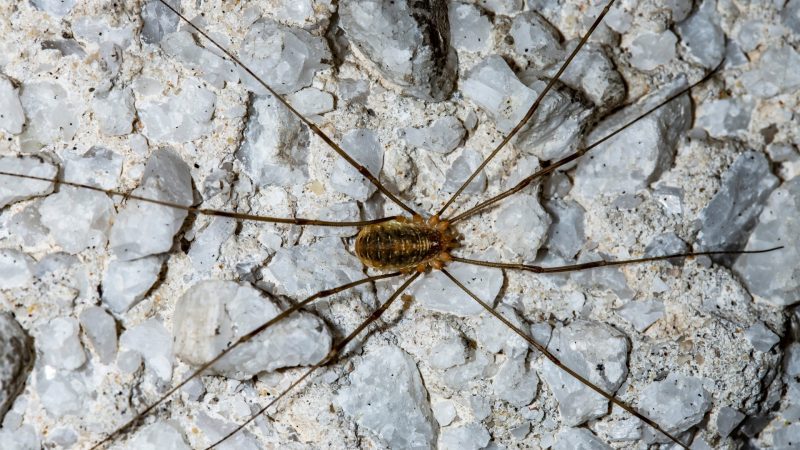
There are two insects called daddy longlegs, which often confuse the general public. Daddy Longlegs has a small, round, one-segmented body, two eyes, and long, flexible legs. However, cellar spiders have two body segments, six to eight eyes, and spin webs.
So, let’s talk more about the features of daddy longlegs and daddy longlegs spiders so that you will know them when you see them.
Are Daddy Longlegs Insects?
Daddy longlegs are in the spider family, but they are neither spiders nor insects. They belong to the taxonomical class of arachnids, but they have their own subspecies called Opiliones.
Unlike spiders, daddy longlegs can eat solid foods. Opiliones are also known as harvestmen since they are scavengers that eat dead insects, plants, and fungi.
Daddy longlegs also cannot spin webs, which means that they look for food on the ground.
Daddy longlegs spiders, which belong to the family pholcidae, are also known as cellar spiders. These spiders have two distinct body segments, and they often spin webs in dark places. They do have fangs but have never been known to bite or poison humans.
Does Daddy Longlegs Have Wings?
Daddy longlegs do not have wings, and they have to walk wherever they go. Sometimes, people call crane flies Daddy Longlegs, though. Crane flies have very long, thin legs like daddy longlegs, but they are not related to the Opiliones family.
Related: Crane Fly vs. Mosquito: Main Differences, Identification, and Biology
How Big Do Daddy Longlegs Get?
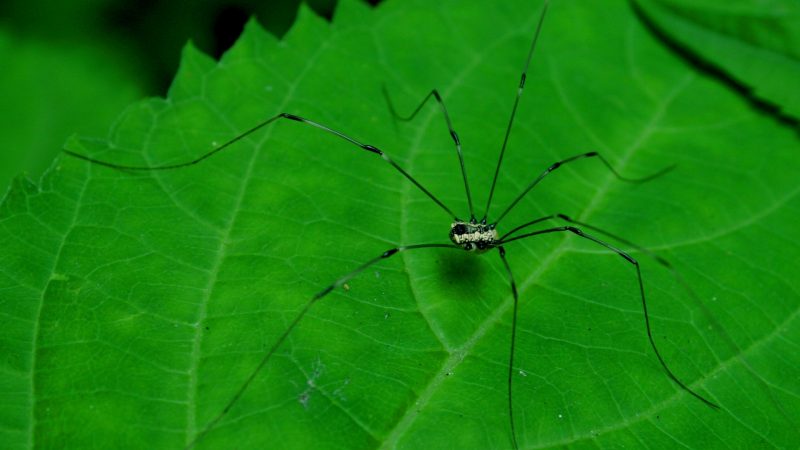
Harvestmen’s daddy longlegs has tiny bodies, which are usually around 5/16 of an inch (8 mm). However, their legs are much longer, and if you measure an adult daddy’s long legs from one tip of its leg to another, it can be larger than 6 inches (15.24 cm) wide.
How Many Legs Does Daddy Longlegs Have?
Harvestmen’s daddy longlegs has eight legs, which is why many people think they are spiders. However, they are more closely related to aphids and mites than spiders.
While Daddy longlegs (both harvestmen and cellar spiders) can shed their legs if a predator catches it, the leg does not grow back.
How Long Does Daddy Longlegs Live?
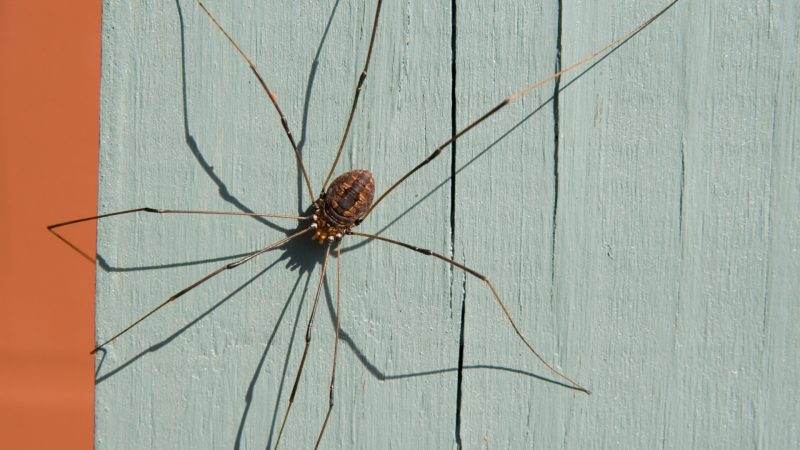
In colder climates, most harvestmen daddy longlegs live for about a year, while in warmer southern temperatures, they can live for up to three years. Still, it is essential to note that female daddy longlegs lives longer than males because most males will die right after mating.
Do Daddy Longlegs Lay Eggs?
Daddy longlegs lay eggs. Females use long egg-placing organs to deposit large clutches of eggs beneath the soil, under debris, or in small holes in the ground. Some females will guard their eggs until they hatch.
Related: How To Get Rid of Spider Eggs?
Is Daddy Longlegs Fast?

Daddy Longlegs is not particularly fast, so they use various defensive maneuvers when faced with predators. They can detach their own legs to distract predators. Once disconnected, the leg can twitch on the ground for up to two hours, distracting a predator while the daddy longlegs runs away.
Daddy longlegs also has scent glands that release a foul odor when threatened, like skunks or stink bugs. Because this scent defense is so powerful, many daddy longlegs will travel in large groups, intensifying their scent collectively.
Is Daddy Longlegs Dangerous?
Daddy Longlegs is not dangerous. They do not produce venom, have no fangs, and rarely bite humans. However, cellar spider daddy longlegs can produce venom and bite humans, but they are not dangerous.
There is a popular myth out there that daddy longlegs have the most toxic venom in the world. Even though this tall tale has taken over popular media, there is no scientific evidence to support it.
Can Daddy Longlegs Bite You?
Technically, daddy longlegs can bite humans. However, the bites of harvestmen hardly ever damage human skin. Their mouthparts are so small that it may just feel like a tiny pinch if they do bite you.
Also, Daddy Longlegs rarely bite. Usually, they will try to run away first.
Are Daddy Longlegs Spiders Deadly?
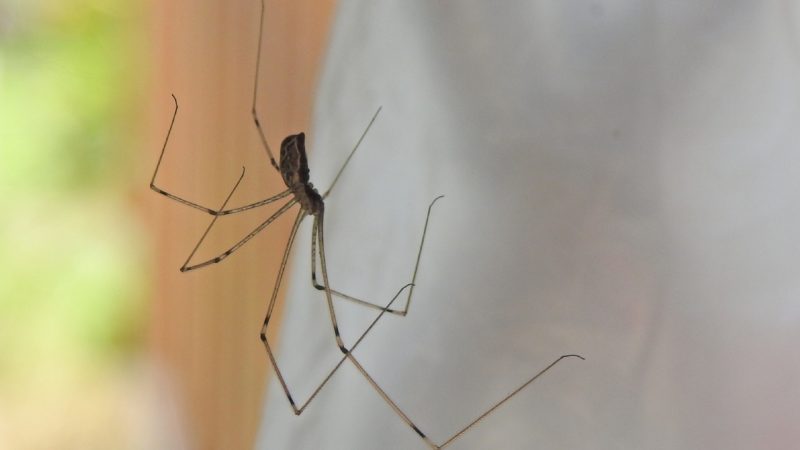
Daddy longlegs spiders of the family pholcidae, also known as cellar spiders, can bite. But they are far from dead even though they have fangs that produce venom.
For many years, there has been a rumor going around that daddy longlegs spiders are poisonous. But is it true? For a short answer, no.
Cellar spiders are common in human homes since they like dark places where they can eat other household pests like flies, mosquitoes, and silverfish. They use their venom to kill their prey, which helps them keep their next meal stuck in their webs.
Cellar spiders’ venom is powerful enough to kill a small bug, but it cannot even harm a mouse.
For more information, check out this segment from Mythbusters, which proved that daddy longlegs spiders are not toxic to humans.
What Can a Daddy Longlegs Bite Do to You?
The bites from harvestmen will do nothing to you. Harvestmen, or proper daddy longlegs, have mouthparts to bite and chew their food. There are no fangs and no poison in a daddy longlegs’ mouth, so if they bite you, it will leave no mark and feel a bit like a poke.
Cellar spider bites will feel like a burning sensation, but it won’t last for long. Cellar spiders’ venom is weak and only works best on small bugs. On humans, a bite might feel like a slight pinprick or a tiny, localized sunburn.
How Poisonous Is a Daddy Longleg?
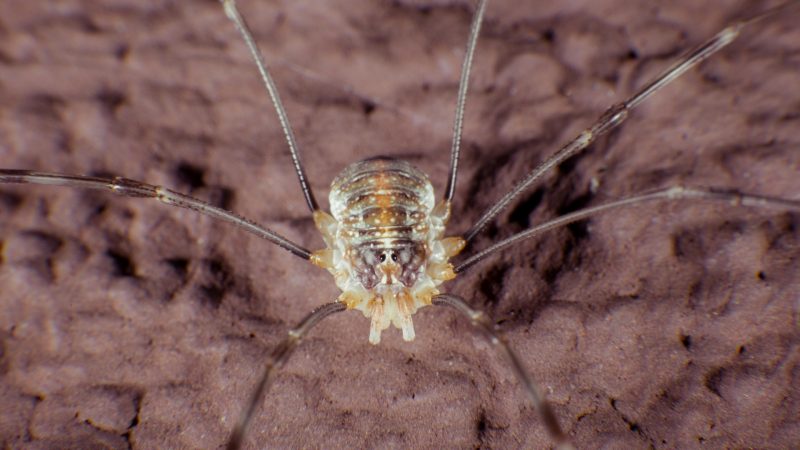
Harvestmen Daddy Longlegs is not poisonous at all. However, daddy longlegs spiders have venom, but they are not very toxic. A daddy longlegs spider bite might burn for a minute, but it won’t kill you or cause an allergic reaction.
So, if daddy longlegs spiders can bite, does that mean that they can hurt you? Well, not really.
Still, daddy longlegs spiders have been falsely awarded as the most poisonous arachnids on earth because they can kill other, more deadly spiders. While they are excellent at catching spiders, a daddy longlegs doesn’t use venom to capture its prey.
Are Daddy Longlegs More Poisonous Than Black Widow?
Daddy longlegs spiders are nowhere near as poisonous as black widows, as their venom does not harm humans. Cellar spiders are very poisonous, but only to other arachnids and insects.
In 2019, a research team at Lewis and Clark University chemically analyzed the venom of the cellar spider for the first time with exciting results. It contains specific proteins, enzymes, and polypeptides that kill insects and arachnids but is harmless to humans and mammals.
Can a Daddy Longlegs Kill a Black Widow?
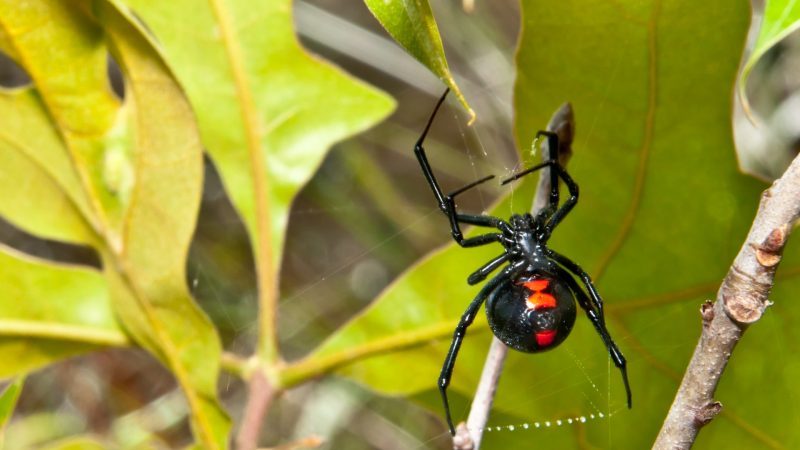
A daddy longlegs cellar spider can kill a black widow because it can shoot strong webs on its prey without getting too close to them. This web-shooting ability allows them to capture larger prey, such as houseflies, silverfish, and other spiders.
However, since a black widow’s venom is much more potent than a cellar spider’s, it will die if the black widow bites it.
So, a cellar spider’s venom is not more powerful than a black widow’s or a brown recluse’s. Still, it can kill other, more poisonous spiders using its long-range web-spinning skills.
What Does Daddy Longlegs Eat?
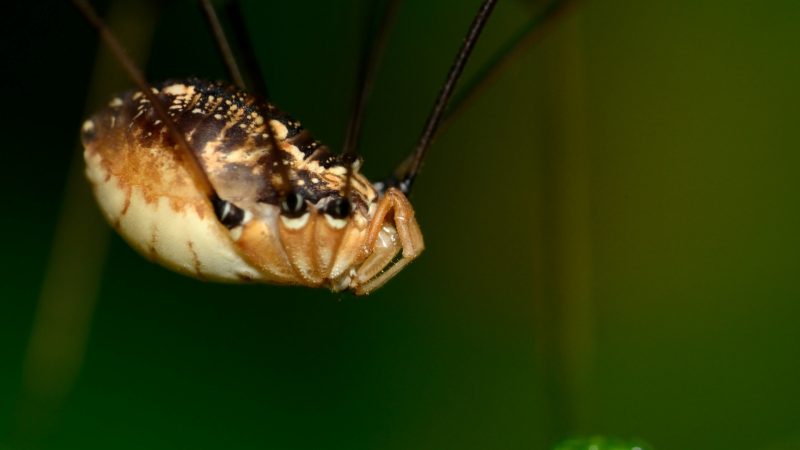
So, daddy longlegs is harmless. However, did you know that they can be beneficial to keep around your home because they kill other pests and clear your property of decaying plants and insects?
Harvestmen and daddy longlegs are scavengers, although they may kill small insects like aphids for food. Cellar spider daddy longlegs eats flies, spiders, and other insects by catching them in their webs.
Harvestmen eat dead insects, dead plants, and fungi. If they are starving or come across a bug small enough to eat, they may kill it for food, but most daddy longlegs only earth thighs that are already dead.
Cellar spiders, on the other hand, kill their prey. They are one of the best house spiders to keep around since they eat other spiders, flies, mosquitoes, beetles, and other common household pests.
How Often Does Daddy Longlegs Need To Eat?
Harvestmen daddy longlegs prefers to eat small amounts of food daily. They usually only come out at night, and they search for decaying insects, animal carcasses, feces, and decaying plants to snack on. Still, they also need to search for a damp spot to get tiny droplets of water.
Cellar spider daddy longlegs can go much longer between meals. They usually only catch one or two insects per week.
How Long Can Daddy Longlegs Survive Without Eating?
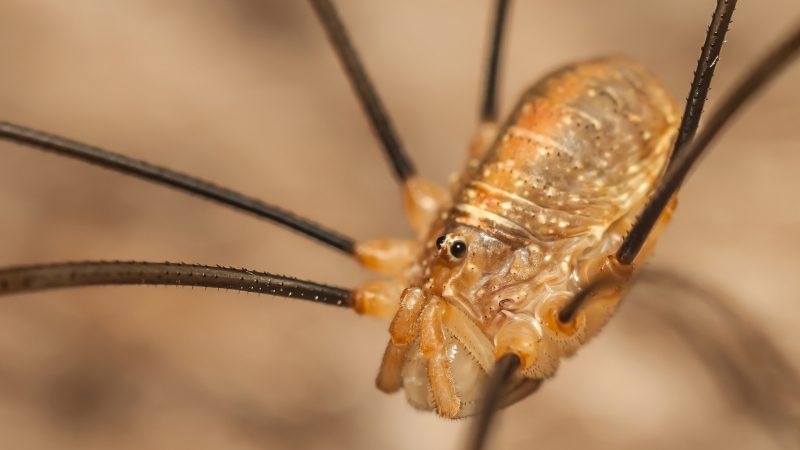
Daddy longlegs spiders can survive up to 8 weeks without food, but they need water, too. Harvestmen daddy longlegs can live up to 4 weeks without food. Given how effective cellar spiders are at hunting and how much dead material there is in a harvestman’s home, a daddy longlegs rarely goes hungry.
List of Sources
UMich BioKIDS. (2021). Pholcidae: INFORMATION. University of Michigan.
College of Letters and Science Field Station. (2014). Phantom Crane Fly (Family Ptychopteridae). University of Wisconsin Milwaukee.
Hawkinson, C. (2005). Beneficial insects in the landscape: Harvestmen or Daddylonglegs. Texas A&M Aggie Horticulture.
Newton, B. (2004). Harvestmen of Kentucky. University of Kentucky Entomology.
Home & Garden Information Center. (2004). Daddy-longlegs. Clemson University.
- How to Get Rid of Copperheads | Practical Guide - August 27, 2023
- How to Get Rid of Corn Snakes | What Makes Them Aggressive? - August 27, 2023
- How to Get Rid of Alligators | Safety Measures and Removal Methods - July 16, 2023
